#dornier do 217
Text

One of the two pre-production glider variants of the Messerschmitt Me 328 jet fighter. This one is being piggy backed on a Dornier Do 217K before release for gliding trials. The two pre-production models were not powered and were constructed by the glider manufacturer Jacobs-Schweyer Flugzeugbau GmbH. The world's greatest aviatrix, Flugkapitän Hanna Reitsch, conducted several trial flights of the two test gliders. For more, see my Facebook group - Eagles Of The Reich
#germany#ww2#luftwaffe#ww2 aircraft#messerschmitt#jet fighters#ww2 jet fighters#me 328#do 217#dornier#third reich#nazi germany
15 notes
·
View notes
Text

Tracer fire from anti-aircraft batteries and searchlights light up the sky during the first air raid on Moscow - July 22 1941. 220 German Heinkel He-111s and Dornier Do-217s flown by select Luftwaffe pilots with new high-altitude engines attacked for approx five hours. Although there were a number of air raids over Moscow, these were very infrequent and largely ineffective
#world war two#1940s#worldwar2photos#history#ww2#ww2 history#wwii#wwii era#world war 2#ww2history#ww2colourphotos#air raid#kremlin#Moscow#soviet union#luftwaffe#tracer#searchlights#1941
80 notes
·
View notes
Text

A twin engined bomber capable of carrying a heavier bomb load than the Dornier Do 17 or He.111, the Do 217 made its first flight 4 October 1938. Introduced into service during Autumn 1940, 1,541 bombers & 364 night fighters were built before production ended in May 1944.
@AirrecC via X
14 notes
·
View notes
Photo
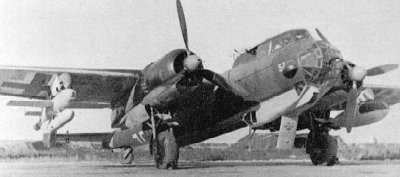
Dornier Do-217 equipped with Hs-293 guided anti-ship missile. With at least 31 allied ships damaged or sunk, the Hs-293 was the world's most successful anti-ship missile until the introduction of the French Exocet more than 30 years later.
11 notes
·
View notes
Photo
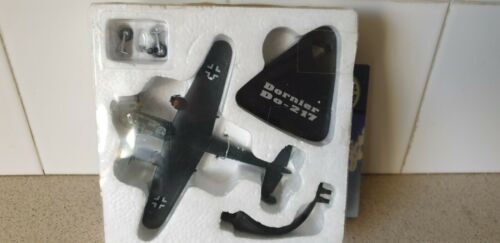
$13.05 Only! ~ ATLAS EDITIONS - DORNIER DO-217 - SMALL SCALE WW2 AEROPLANE, Aircraft Desk Models, Military Aircraft Models Check This Out!
0 notes
Text
Panzer general 2 walkthrough


Artillery pieces cost sky high, and you need lots of them cos they’ve been nerfed compared to PC1. Captured units, that provided so much fun in PC1, became almost impossible to obtain and operate, unless you are fine with severely reduced unit headcount and minimal to no reinforcements available. FlaK 18, the acht-acht, in terms of core slots costs as a Tiger, while lacking armor, ability to use it offensively, unless certain heroes are embedded, and decimated by “support fire” trait. Ok, I understand, guys plan to sell lots of dlc like '39-’40-you name-it campaigns, Africa-corps 2, allied/soviet/pacific/alien-vs-predator corps 2 and so on, and live from it for years, but hey – for people to buy a dls to the game they at least have to remember it exists, which is not the case here. Amount of content is, well, underwhelming. No, really, PG1, released 25 years ago, with simple, but reasonably detailed, unit icons and nice animations, looked better. All in all, graphics are a step (or two) back. For me the only way to visually discern, say, Dorniers 217 from U-88 from Bf110 at normal viewing distance was to put different liveries on them.

Ok, my eyes are not what they used to be, but still. Air units sometimes are barely visible unless you hit the Tab key, especially if located above multiple land units. Who on Earth asked you to do a classic wargame in 3D? Oh, oh, I’m so happy my PzIV turns its turret, wohoo! C’mon. I don’t expect miracles from the industry these days, but to screw up a perfectly fine game, in exactly the same way SSI did it with PG2/3 – one would expect devs to do their homework. I don’t expect miracles from the industry these days, but to screw up a perfectly fine game, in Waited it so long to be disappointed so much…. Waited it so long to be disappointed so much….

0 notes
Text

'Fighting Planes of World War Two' feature.
From Warlord No. 39, 21 June 1975.
Art by Ian Kennedy.
D.C. Thomson & Co. Ltd.
#dc thomson#planes#ian kennedy#1975#21 06#hawker hurricane#supermarine spitfire#spitfire#messerschmitt#messerschmitt me 110#messerschmitt bf 110#dornier do 217#warlord#raf
35 notes
·
View notes
Photo

Two Dorniers Do 217 flying above the Thames near Woolwich Arsenal (September 7th, 1940).
#history#military history#aviation history#ww2#home front#the blitz#london blitz#germany#nazi germany#britain#england#london#thames#woolwich arsenal#luftwaffe#dornier do 217
4 notes
·
View notes
Text

1322x973 Un Dornier Do 217 foto via V. Talón, de su colección fotográfica.
1 note
·
View note
Photo
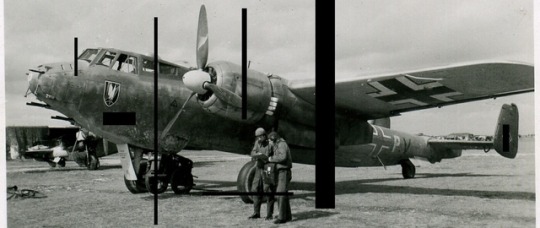
Crew nightlight Dornier Do 217 J of NJG.3 studying the flight mission.
4 notes
·
View notes
Text
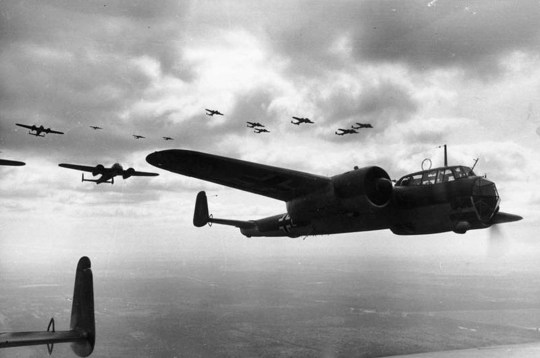
Dornier Do 17Zs flying over France, 21 June 1940. These were known as the "Flying Pencils". Replaced by the much improved Do 217. There was also a Do 215, which was basically an export version of the Do 17, only about 105 of those were built. For more, see my Facebook group - Eagles Of The Reich
#germany#ww2#luftwaffe#ww2 aircraft#dornier#do 17#flying pencil#1940#third reich#nazi germany#do 17z#ww2 bombers
19 notes
·
View notes
Text
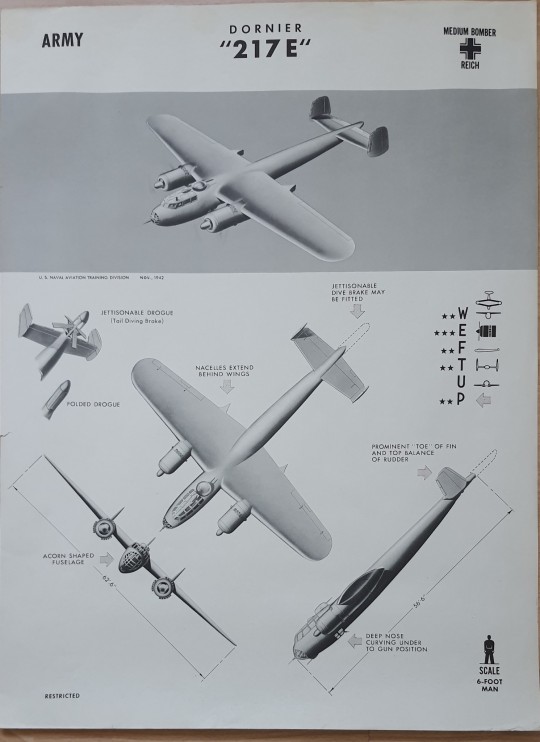
WW2 recognition poster of a Dornier Do-217 E
This special US made recognition poster features the WEFTUP-classification (Wings Engines Fuselage Tail Undercarriage Peculiarities) which is less common than the WEFT. Also does it feature a more artistic style and has drawings of the aircraft instead of the usual black silhouette.
As can be seen under the profile drawing, the poster dates back to November 1942 and was mainly used for training pilots and gunners.
10 notes
·
View notes
Text

Was the Nakajima Ki-49 ‘Helen’ World War 2 bomber a terrible aircraft? And why didn’t Japan have truly heavy bombers?
Hush KitAugust 14, 2023
Despite over 800 being built, today the Nakajima Ki-49 bomber remains out of the historical limelight. Appropriately for such a seemingly introverted machine, it was assigned the almost comically innocuous codename ‘Helen’, after the wife of an Allied intelligence officer in the Pacific Southwest. In service with the Imperial Japanese Army Air Service and operating in dangerous skies, the type served as a bomber, anti-submarine patroller, transport and even as a kamikaze manned suicide aircraft. Often facing utterly fierce opposition, the bomber had a sting in its tails – and an even more potent one on its back. Often condemned as vulnerable, we asked author George Eleftheriou for the truth about the shadowy ‘Storm Dragon’.
“It wasn’t vulnerable! Would you call the Dornier Do 217 or the Tupolev Tu-2 or the Vickers Wellington vulnerable? Why is it that only Japanese aircraft have this reputation?”
What is the closest Allied analogue to the Helen, and how did it compare?
Rather difficult to answer. Combat-philosophy-wise the Martin B-26 Marauder would be the closest one. A fast medium level bomber that would have been able to conduct raids in lightning speed avoiding getting intercepted by enemy fighters was a common concept in many air forces around the world.
The B-25 Mitchell is a second close but the ground attack role it was largely assigned to in the Pacific did not match the combat deployment of the “Donryu”. With only a 7.7-mm flexible machine gun in the nose, it simply could not do any serious strafing attacks like the Mitchell could.

The US B-26 Marauder had a maximum speed of 287mph and the Mitchell even less, at 272mph. In theory, Helen was faster than both, with a spritely top speed of 305mph. That’s only on paper, of course. In reality the “Donryu” (Storm Dragon) was much slower, with a max speed never exceeding 400km/h as beyond that, the engines badly misbehaved. As it was equipped with engines of only 1410 horsepower engines, compared to the hefty 2000hp and 1700hp of the two US bombers, this speed could only be achieved by sacrificing the bomb load. “Donryu” could carry a ton of bombs while the US bombers could carry almost double. In the Pacific Theatre, where most combat took place over jungles, big bombs did not really matter. Where they mattered most was against ships. Therefore, Helens, like Mitchells, normally carried 50kg bombs and quite often cluster bombs. But the extra ton the US bombers carried meant higher destructive capability and success rate.
What was the best thing about it?
The Donryu was the first Japanese Army bomber with a tail gunner operating a 7.7mm machine gun. An improvement over the Mitsubishi Ki-21 “Sally” that only had a remotely operated machine gun on the tail. But in any case, the role of the tail gun was to force the enemy fighters out of this vulnerable blind spot and into the sights of the heavier and more destructive 20-mm cannon Donryu had on its dorsal position.
And the worst?
I would have to say its engines. Underpowered, difficult to maintain and prone to breakdowns.
How many were lost in combat, and to what causes?
Difficult to answer. No loss statistics by the Japanese Army have survived, if any were kept. Model 1 Ki-49s were retired once Model 2s became available and they were assigned to some flight schools in Japan and probably to a few transport units. It could be said that most Model 2s, the model that saw the most combat, were shot down but a good number was destroyed on the ground by Allied bombing raids.
Was it based on another design or was it developed into another type?
Neither. It was an original design by Nakajima and there was a small number of models and test aircraft but it had no successor.
What was its most important historical contribution?
None I know of. The tail gunner maybe?
Who used it?
Unlike Allied aircraft types that were operated by different nations, it only saw action with the Imperial Japanese Army Air Force. If you’re asking about units, the 7th, the 61st, the 62nd, the 74th and the 95th Sentai were the primary units that flew the type.
(Ed – I believe it did have some post-war use by the French in Indochina, with Indonesian guerilla fighters and as a transport with the Royal Thai Air Force though I’m happy to be corrected if wrong)
What was its worst operational experience?
If you’re talking about combat missions, then it must be the loss of eight 62 Sentai Donryu and one damaged during a single raid against Ledo, Assam, India, on March 27, 1944.
Another unpleasant experience was the loss of nine 74th Sentai “Donryu” and four seriously damaged during a ground attack raid by US Navy aircraft in Luzon, the Philippines, on November 19, 1944.
Why was it so vulnerable?
It wasn’t! Would you call the Dornier Do 217 or the Tupolev Tu-2 or the Vickers Wellington vulnerable? Why is it that only Japanese aircraft have this reputation?
Would you say it was the worst Japanese aircraft, and is that what interested you about the aircraft?
It was definitely not the worst Japanese aircraft. There were other types with higher attrition rates, like the Mitsubishi G4M ‘Betty’ and technically speaking the much venerated Nakajima Ki-43 Hayabusa with its meagre 7.7mm machine guns was completely obsolete by the time it started to be produced.
Perhaps this kind of infamy was stuck to the Donryu because it has been considered an easy-to-shoot-down type. But contrary to non-Japanese sources, many Donryu that are counted as “kills” by Allied fighter pilots, did manage to bring their crew back to base.
Its engines left much to be desired and therefore it can be said that it was not a good aircraft. It was definitely not an overall improvement over the older Mitsubishi Ki-21 Sally except for a few features like the tail gun and the 20-mm dorsal cannon.
But as the reader can find in the Osprey publication, the crews who had no previous experience with the Sally and therefore couldn’t compare the two types, were not particularly unhappy with the aircraft and did their best with what they had. For example, the crews and bombers excelled during night missions. As explained in the book, most Helen losses were caused by miscalculation, bad tactics or simply bad luck. For sure, more powerful and reliable engines would have resulted in a much better aircraft but I cannot say the Donryu was a death-trap. At best it was a mediocre type that, in my opinion was placed into production to appease Nakajima after its original design was ‘borrowed’ by Mitsubishi to produce the Sally. But objectively speaking, Nakajima always had issues with its engines, whereas Mitsubishi produced better ones and therefore superior aircraft. It was the mindset of the Japanese Army (and Navy) compounded by the technological limitations of the Japanese industry and the reality on the ground that failed to provide the Japanese bomber crews with better really heavy bombers.
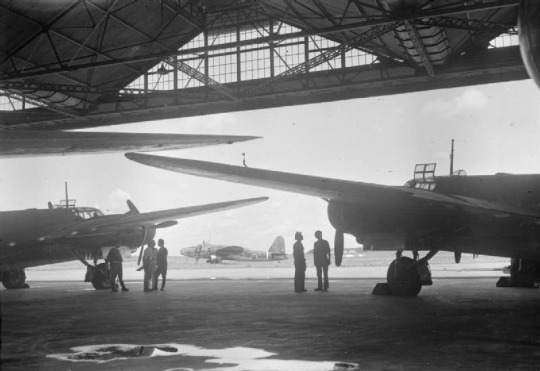
Much has been debated as to why the Japanese (and the Germans) never put into production a really heavy four-engined bomber. Both the Sally and the Helen were developed as fast bombers with the possibility of a war against the USSR in mind and combat operations in Siberia where no industrial centres or other major targets existed. Therefore the bombers were designed to quickly attack troop concentrations and fortifications, mirroring similar German tactics. When the Sino-Japanese War broke out, the bombers were assigned to exactly these roles and occasionally attacked cities aiming mostly on military targets rather than conducting carpet bombing that was later employed by the Allies.
Similarly during the Pacific War, Japanese bombers targeted enemy troop concentrations closely liasing with the infantry. Strategic bombing was never necessary since there were no appropriate targets. The Japanese Empire wanted to capture the oil fields of South East Asia and put them to use, not destroy them. In the opening days of the war, Allied held airfields were not targeted; the enemy aircraft found on them were. Because the airfields were expected to be captured by the advancing infantry and then be operated by the Japanese aircraft.
Running the Hush-Kit site takes a lot of effort. If you wish to see this site carry on please consider making a small (or large) donation. Reccommended donation £12.00. Every donation is greatly recieved. Donate here and be part of our story. (In case my WordPress skills are not good enough and this link won’t work, please use the button below and to the right)
When the need arose for really heavy bombers, such as during the attacks against the Allied bases in Assam or later during attacks against bigger bases that were built by the Allies like on Morotai Island and Leyte, that’s when the Japanese industry and technology failed to deliver, mostly because it lacked experience with four-engine designs (except for flying boats). In any case, newly delivered four-engined heavy bombers would have created new challenges, requiring bigger and better constructed airfields and more efficient logistics to support heavier bomber operations. The Japanese could barely supply enough fuel for their Helen and Sally-equipped bomber units and never got even close to the logistic capabilities of the Allies.
The Helen, like many other Japanese aircraft types, has this reputation of being a bad aircraft that was vulnerable and quickly shot down by Allied pilots. The more I delved into original Japanese sources, like testimonies from bomb crews, the more I realised that the complete story has not been told and that inspired me to write this book with Osprey.
3 notes
·
View notes
Text

• Hanna Reitsch
Hanna Reitsch was a German aviator and test pilot. Along with Melitta von Stauffenberg, she flight tested many of Germany's new aircraft during World War II and received many honors. She set more than 40 flight altitude records and women's endurance records in gliding and unpowered flight, before and after World War II.
Reitsch was born in Hirschberg, Silesia (today Jelenia Góra in Poland) on March 29th, 1912 to an upper-middle-class family. She was daughter of Dr. Wilhelm Willy Reitsch, who was ophthalmology clinic manager, and his wife Emy Helff-Hibler von Alpenheim, who was a member of the Catholic Austrian nobility. Hanna grew up with two siblings, her brother Kurt, a Frigate captain, and her younger sister Heidi. She began flight training in 1932 at the School of Gliding in Grunau. While a medical student in Berlin she enrolled in a German Air Mail amateur flying school for powered aircraft at Staaken, in a Klemm Kl 25. In 1933, Reitsch left medical school at the University of Kiel to become, at the invitation of Wolf Hirth, a full-time glider pilot/instructor at Hornberg in Baden-Württemberg. Reitsch contracted with the Ufa Film Company as a stunt pilot and set an unofficial endurance record for women of eleven hours and twenty minutes. In January 1934, she joined a South America expedition to study thermal conditions, along with Wolf Hirth, Peter Riedel and Heini Dittmar. While in Argentina, she became the first woman to earn the Silver C Badge, the 25th to do so among world glider pilots. In June 1934, Reitsch became a member of the Deutsche Forschungsanstalt für Segelflug (DFS) and became a test pilot in 1935. Reitsch enrolled in the Civil Airways Training School in Stettin, where she flew a twin-engine on a cross country flight and aerobatics in a Focke-Wulf Fw 44. At the DFS she test flew transport and troop-carrying gliders, including the DFS 230 used at the Battle of Fort Eben-Emael.
In September 1937, Reitsch was posted to the Luftwaffe testing centre at Rechlin-Lärz Airfield by Ernst Udet. Her flying skill, desire for publicity, and photogenic qualities made her a star of Nazi propaganda. Physically she was petite in stature, very slender with blonde hair, blue eyes and a "ready smile". She appeared in Nazi propaganda throughout the late 1930s and early 1940s. Reitsch was the first female helicopter pilot and one of the few pilots to fly the Focke-Achgelis Fa 61, the first fully controllable helicopter, for which she received the Military Flying Medal. In 1938, during the three weeks of the International Automobile Exhibition in Berlin, she made daily flights of the Fa 61 helicopter inside the Deutschlandhalle. In September 1938, Reitsch flew the DFS Habicht in the Cleveland National Air Races. Reitsch was a test pilot on the Junkers Ju 87 Stuka dive bomber and Dornier Do 17 light/fast bomber projects, for which she received the Iron Cross, Second Class, from Hitler on March 28th, 1941. Reitsch was asked to fly many of Germany's latest designs, among them the rocket-propelled Messerschmitt Me 163 Komet in 1942. A crash landing on her fifth Me 163 flight badly injured Reitsch; she spent five months in a hospital recovering. Reitsch received the Iron Cross First Class following the accident, one of only three women to do so.
In February 1943 after news of the defeat in the Battle of Stalingrad she accepted an invitation from Generaloberst Robert Ritter von Greim to visit the Eastern Front. She spent three weeks visiting Luftwaffe units, flying a Fieseler Fi 156 Storch. On February 28th, 1944, she presented the idea of Operation Suicide to Hitler at Berchtesgaden, which "would require men who were ready to sacrifice themselves in the conviction that only by this means could their country be saved." Although Hitler "did not consider the war situation sufficiently serious to warrant them...and...this was not the right psychological moment", he gave his approval. The project was assigned to Gen. Günther Korten. There were about seventy volunteers who enrolled in the Suicide Group as pilots for the human glider-bomb. By April 1944, Reitsch and Heinz Kensche finished tests of the Me 328, carried aloft by a Dornier Do 217. By then, she was approached by SS-Obersturmbannführer Otto Skorzeny, a founding member of the SS-Selbstopferkommando Leonidas (Leonidas Squadron). They adapted the V-1 flying bomb into the Fieseler Fi 103R Reichenberg including a two-seater and a single-seater with and without the mechanisms to land. The plan was never implemented operationally, "the decisive moment had been missed."
In her autobiography Fliegen, mein Leben Reitsch recalled that after two initial crashes with the Fi 103R she and Heinz Kensche took over tests of the prototype Fi 103R. She made several successful test flights before training the instructors. "Though an average pilot could fly the V1 without difficulty once it was in the air, to land it called for exceptional skill, in that it had a very high landing speed and, moreover, in training it was the glider model, without engine, that was usually employed." In October 1944, Reitsch claims she was shown a booklet by Peter Riedel which he'd obtained while in the German Embassy in Stockholm, concerning the gas chambers. She further claims that while believing it to be enemy propaganda, she agreed to inform Heinrich Himmler about it. Upon doing so, Himmler is said to have asked whether she believed it, and she replied, "No, of course not. But you must do something to counter it. You can't let them shoulder this onto Germany." "You are right," Himmler replied. During the last days of the war, Hitler dismissed Hermann Göring as head of the Luftwaffe and appointed Reitsch's lover, von Greim, to replace him. Von Greim and Reitsch flew from Gatow Airport into embattled Berlin to meet Hitler in the Führerbunker, arriving on April 26th, as the Red Army troops were already in the central area of Berlin. Reitsch and von Greim had flown from Rechlin–Lärz Airfield to Gatow Airfield in a Focke Wulf 190, escorted by twelve other Fw 190s from Jagdgeschwader 26 under the command of Hauptmann Hans Dortenmann. In Berlin, Reitsch landed a Fi 156 Storch on an improvised airstrip in the Tiergarten near the Brandenburg Gate. Hitler gave Reitsch two capsules of poison for herself and von Greim. She accepted the capsule.
During the evening of April 28th, Reitsch flew von Greim out of Berlin in an Arado Ar 96 from the same improvised airstrip. This was the last plane out of Berlin. Von Greim was ordered to get the Luftwaffe to attack the Soviet forces that had just reached Potsdamer Platz and to make sure Heinrich Himmler was punished for his treachery in making unauthorised contact with the Western Allies so as to surrender. Troops of the Soviet 3rd Shock Army, which was fighting its way through the Tiergarten from the north, tried to shoot the plane down fearing that Hitler was escaping in it, but it took off successfully. Reitsch was soon captured along with von Greim and the two were interviewed together by U.S. military intelligence officers. When asked about being ordered to leave the Führerbunker on April 28th, 1945, Reitsch and von Greim reportedly repeated the same answer: "It was the blackest day when we could not die at our Führer's side." Reitsch also said: "We should all kneel down in reverence and prayer before the altar of the Fatherland." When the interviewers asked what she meant by "Altar of the Fatherland" she answered, "Why, the Führer's bunker in Berlin ..." She was held for eighteen months. Von Greim killed himself on May 24th, 1945. Evacuated from Silesia ahead of the Soviet troops, Reitsch's family took refuge in Salzburg. During the night of May 3rd, 1945, after hearing a rumour that all refugees were to be taken back to their original homes in the Soviet occupation zone, Reitsch's father shot and killed her mother and sister and her sister's three children before killing himself.
After her release Reitsch settled in Frankfurt am Main. After the war, German citizens were barred from flying powered aircraft, but within a few years gliding was allowed, which she took up again. In 1952, Reitsch won a bronze medal in the World Gliding Championships in Spain; she was the first woman to compete. In 1955 she became German champion. She continued to break records, including the women's altitude record (6,848 m (22,467 ft)) in 1957 and her first diamond of the Gold-C badge. During the mid-1950s, Reitsch was interviewed on film and talked about her wartime flight tests of the Fa 61, Me 262 and Me 163. In 1959, Indian Prime Minister Jawaharlal Nehru invited Reitsch, who spoke fluent English, to start a gliding centre, and she flew with him over New Delhi. In 1961, United States President John F. Kennedy invited her to the White House. From 1962 to 1966, she lived in Ghana. The then Ghanaian President, Kwame Nkrumah invited Reitsch to Ghana after reading of her work in India. At Afienya she founded the first black African national gliding school, working closely with the government and the armed forces. The West German government supported her as technical adviser. Reitsch's attitudes to race underwent a change. "Earlier in my life, it would never have occurred to me to treat a black person as a friend or partner ..." She now experienced guilt at her earlier "presumptuousness and arrogance". She became close to Nkrumah. The details of their relationship are now unclear due to the destruction of documents, but some surviving letters are intimate in tone. In Ghana, some Africans were disturbed by the prominence of a person with Reitsch's past, but Shirley Graham Du Bois, a noted African-American writer who had emigrated to Ghana and was friendly towards Reitsch, agreed with Nkrumah that Reitsch was extremely naive politically. Throughout the 1970s, Reitsch broke gliding records in many categories, including the "Women's Out and Return World Record" twice, once in 1976 (715 km (444 mi)) and again, in 1979 (802 km (498 mi)), flying along the Appalachian Ridges in the United States. During this time, she also finished first in the women's section of the first world helicopter championships. Reitsch was interviewed and photographed several times in the 1970s, towards the end of her life, by Jewish-American photo-journalist Ron Laytner.
Reitsch died of a heart attack in Frankfurt at the age of 67, on August 24th, 1979. She had never married. She is buried in the Reitsch family grave in Salzburger Kommunalfriedhof. Former British test pilot and Royal Navy officer Eric Brown said he received a letter from Reitsch in early August 1979 in which she said, "It began in the bunker, there it shall end." Within weeks she was dead. Brown speculated that Reitsch had taken the cyanide capsule Hitler had given her in the bunker, and that she had taken it as part of a suicide pact with Greim. No autopsy was performed, or at least no such report is available.
#ww2#world war 2#second world war#world war ii#wwii#history#german history#biography#aviation#womens history#women in history#germany#airforce history#test pilot
46 notes
·
View notes
Photo

Dornier DO 217 J-2
29 notes
·
View notes
